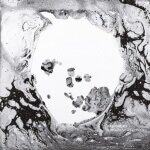
Tanning or Toasting? The dangers of a spray-tan
As summer months have dreamed themselves back into existence, one of the most damaging fashion trends has also recurred: the tan.
It is agreed that tan beds are a complete no-go, especially for anyone who has experienced, first or second-hand, the ruthless wrath and prevalence of skin cancer. Yet still, in the UK, melanomas are one of the most common cancers in young adults aged fifteen to thirty-four.
Despite prudence incurred by the statistics, people of all ages still strive for the perfectly tanned ‘beach body’, its popularity heightened in the wake of influential seasonal television. Standards for the ‘summer glow’ are portrayed on popular shows such as ‘Love Island’, whereby contestants spend hours upon hours outdoors in sun-soaked Spain, normalizing excessive UV exposure.
Hence, sunbathing is an activity that continues to proliferate in beach resorts over the summer months. The attraction has always been unbeknown to me; acquiring sunburn just once every two years could triple your risk of melanoma, according to Cancer Research UK.
Thankfully, fake tan has continued to be a viable and effective alternative, its use unlikely to provoke any detrimental health conditions.
But what if I were to tell you that fake tan isn’t so risk-free after all?
DHA, a sugar, is a vital active ingredient in fake tan. Following a chemical reaction that produces melanoidins after you apply the product to your skin, DHA turns the upper layer of dead skin cells brown. Research has shown that when you use self-tanning products, you are actually just ‘toasting’ yourself; the same browning effect happens to bread.
But that’s not the worst of it. Inhaling DHA from spray-tans is a cause for concern: it could damage your DNA as it enters your lungs, “aid(ing) systemic absorption” (the absorbtion of potentially toxic DHA into the bloodstream) explains Rey Panettieri, MD, toxicologist and lung specialist at the University of Pennsylvania’s Perelman School of Medicine, to ABC News. According to Cancer Research UK, DHA’s long-term risks are still very much unknown. So, opt for some self-tanning cream or oil rather than the spray alternative. There are a few organic options on the market, such as Dr Organic’s Moroccan Glow Mousse.
Otherwise, ditch the chemicals and indulge in some refreshing and re-hydrating carotene-rich carrots and tomatoes, to truly attain that summer glow the natural way. Accept that your natural complexion is unique and beautiful, and go fake-tan-free!




























DHA is a simple sugar and is nontoxic. In fact, it is an intermediate in carbohydrate metabolism in higher plants and animals and is more rapidly metabolized than glucose in the body. Specifically, this three-carbon keto sugar is a physiologic product of the body formed and utilized during glycolysis-that quintessential metabolic process that we’ve all had to memorize at least once. DHA used in self-tanners is usually prepared by fermentation of glycerine by Acetobacter suboxydans.
DHA’s browning effects were discovered by accident. In the mid-1950s, at Children’s Hospital at the University of Cincinnati, researcher Eva Wittgenstein was studying the effect of large oral doses of DHA in children who had glycogen storage disease. These kids were ingesting a lot of DHA-as much as 1 g per kg of their body weight. Sometimes the children spit up some of this sweet concentrated material, and it splashed on their skin. A few hours later, the kids had brown spots on their skin where stray splashes hadn’t been wiped off.
Wittgenstein was able to do something with her observations other than berating the staff for not getting those kids cleaned up. Curious, she prepared aqueous solutions of varying concentrations of DHA and was able to reproduce the pigmentation on her own skin. (That’s a lot better than letting the kids do it for her.) She was able to turn her skin brown, but how?
The answer lies in the Maillard reaction, perhaps known best to food chemists. In this process, named for Louis-Camille Maillard, who first described it in 1912, amino acids interact with sugars to create brown or golden brown compounds. This type of interaction is the cause of much of the browning that occurs during manufacture and storage of foods. It also makes beer golden brown.
Here is how it happens in self-tanners: The reaction of skin with DHA to produce an artificial tan proceeds through combination with free amino groups in skin proteins, and particularly by combination of DHA with the free guanido group in arginine. (Epidermal proteins have a very high content of the amino acids arginine, lysine, and histidine.) In related experiments, Wittgenstein found that arginine was the most reactive, with the appearance of a dark brown color within 30 minutes. Aqueous mixtures of DHA with glycine, lysine, and histidine also gave brown to yellow pigments. These pigments are called melanoidins. Melanoidins are polymeric compounds that are linked by lysine side chains to the proteins of the stratum corneum-which is the outermost, dead layer of human skin.
And DHA doesn’t penetrate any further than the stratum corneum. Wittgenstein figured this out by tape stripping. After she treated her skin with a solution of DHA and before the pigment had developed, she put some tape on her skin and pulled it off. No pigment formed in the peeled area.
DHA is present in tanning products at concentrations between 2 and 5%. The deeper tanning formulas are more concentrated. The formulations are stable at pHs between 4 and 6. Above pH 7, brown compounds form in solution, so it doesn’t work as a tanner. Therefore, mixtures sold as tanning agents are buffered to about pH 5 and are also kept relatively cool, because prolonged heating to even a little above body temperature affects their stability.
The cosmetic acceptability of these products seems to have improved in recent years. More natural-appearing brown or golden hues are produced, as opposed to a more off-color orange observed with older formulations. The shades obtained may be more acceptable to medium-complected people than those with dark or fair complexions. Purer supplies of DHA, refining of DHA-containing vehicles to allow better penetration, recognition of the need for a lower pH, and more rapid color change with a lower concentration of DHA may have all contributed to the improved outcome.
Although the formation of melanoidins is different from that of melanin-the natural substance in skin that causes real tanning-some of their properties are similar, especially their absorption spectra. This suggests DHA tans offer some protection from the sun, but not much-maybe equivalent to SPF (sun protection factor) 2 or 3. So you’ll still need plenty of sunscreen, shades, and a big hat to stay safe. You can get a wicked sunburn through your artificial tan and defeat the whole purpose.
So play it safe: Your perfect tan is made in the shade.
Non-burning sun exposure is absolutely necessary for human health. Here are a few things you should know:
Recent research shows that sunscreen does not protect against skin cancers, either melanoma or non-melanoma skin cancer.
•Seventy-five percent of melanoma occurs on areas of the body that are seldom or never exposed to sun
•Women who sunbathe regularly have half the risk of death during a 20-year period compared to those who stay indoors.
•A Spanish study shows that women who seek the sun have one-eleventh the hip-fracture risk as those who avoid sun.
•Men who work outdoors have half the risk of melanoma as those who work indoors.
• An Iranian study showed that Women who avoid the sun have 10-times the risk of breast cancer as those who embrace the sun.
•Women who sunbathe regularly have half the risk of death during a 20-year period compared to those who avoid the sun.
•Sun exposure increases nitric oxide production, which leads to a decrease in heart disease risk.
•Sun exposure dramatically improves mood through the production of serotonin and endorphin. More information: sunlightinstitute.org. Or, read Dr. Marc Sorenson’s new book, Embrace the Sun, available at Amazon.